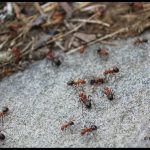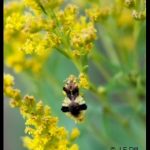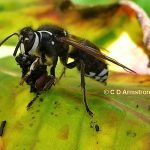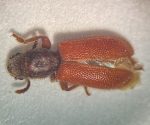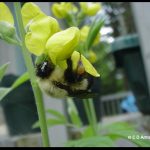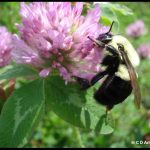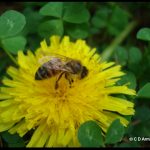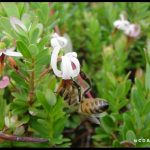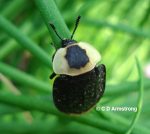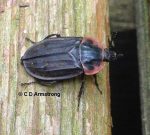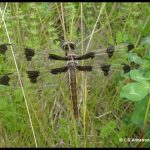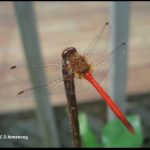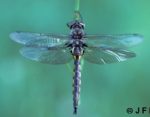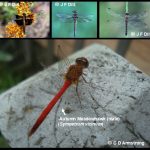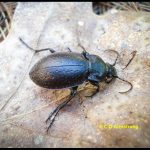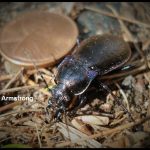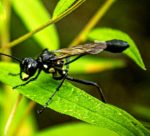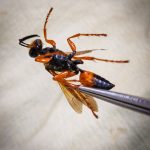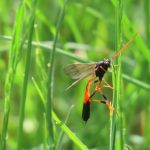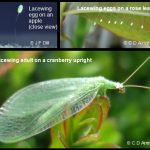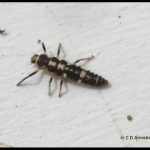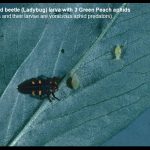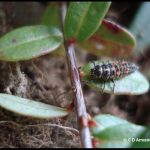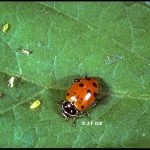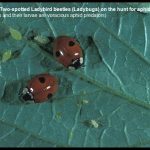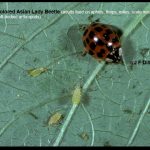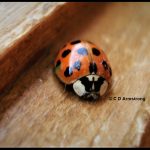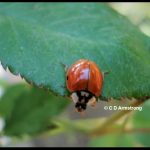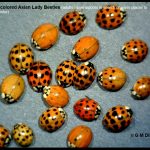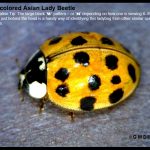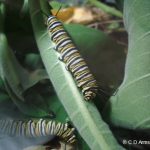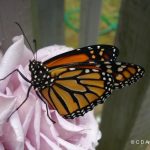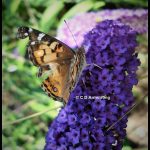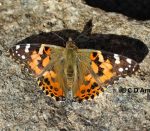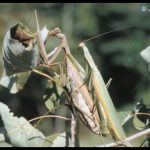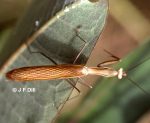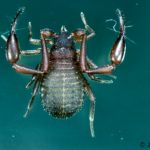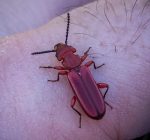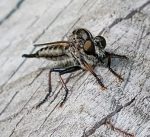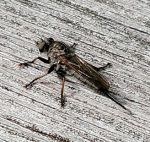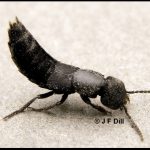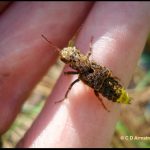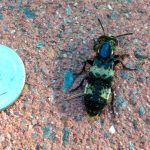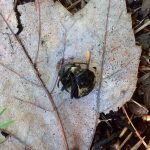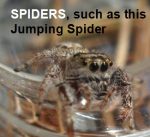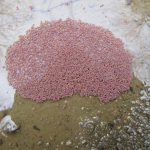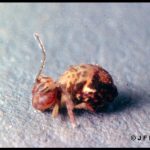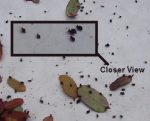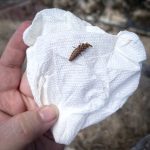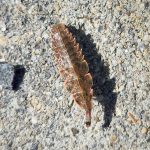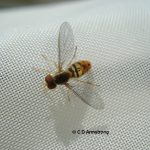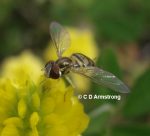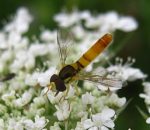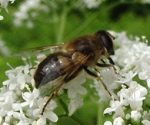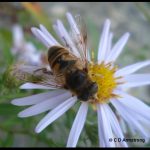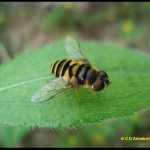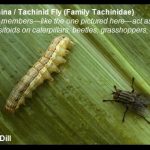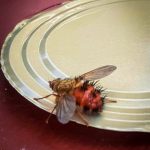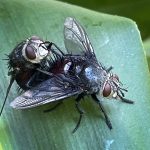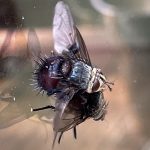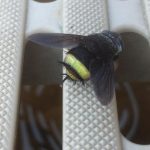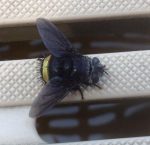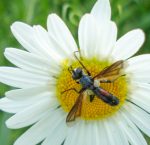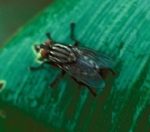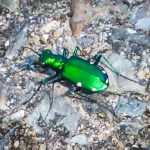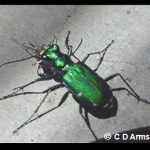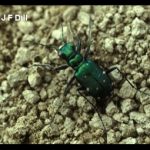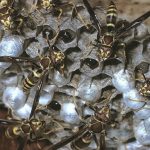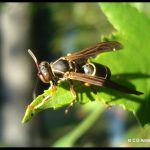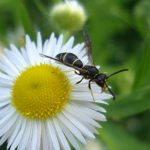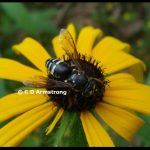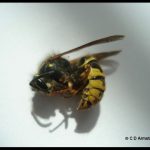Photo Gallery: Beneficials
Some of these can sometimes be a household nuisance–for example, ladybugs and ants–or even dangerous in the case of certain spiders or various stinging insects such as yellowjackets and hornets. However, they all play a beneficial role in nature. For a better understanding of their beneficial role, visit our bulletin: Beneficial Insects and Spiders in Your Maine Backyard. Also, you may like to have a look at this helpful resource about Insectary Plants (part of a free online resource to help you discover and grow various plant species that are especially helpful at providing habitat and food for many insects).
-
Allegheny Mound Ants in Bristol, Maine
Photo taken: 7/19/2017
- Ambush Bugs
- Bald-faced Hornet (Dolichovespula maculata) (technically a type of yellowjacket) (shown here holding the remnants of an insect which was probably preyed upon by the hornet)
- Blood-Colored Checkered Beetle (Zenodosus sanguineus) (These beetles are predators of woodboring insects) (Bridgton, ME; 10/20/2023) (Photo courtesy of Rebecca Long, UMaine Extension)
- Bumblebee (Sometimes written as two words)
- Bumblebee (queen)
- Honey Bee (Sometimes written as one word)
- Honey Bee visiting a cranberry blossom
- American Carrion Beetle (Necrophila americana) (Etna, ME; 6/12/2012)
- Margined Carrion Beetle (Oiceoptoma noveboracense) (Etna, ME; 4/11/2010)
- Dragonfly
- Autumn Meadowhawk (dragonfly)
- Dragonflies (the nymphs are aquatic)
- Additional dragonfly images
- Bronze Ground Beetle (“Bronze Carabid”) (Carabus nemoralis) (Stetson, ME; 5/21/2009)
- Bronze Ground Beetle (“Bronze Carabid”) (Carabus nemoralis) (Etna, ME; 4/3/2010)
- Gold-marked Thread-waisted Wasp (Eremnophila aureonotata) (Rockport, ME; 8/30/2020)
- Great Golden Digger Wasp (Sphex ichneumoneus) (Photo courtesy of Jennifer Morton; Detroit, Maine; 8/19/2021)
- A species of Ichneumonidae wasp (Therion circumflexon) (North Anson, ME; 5/23/2024) (Photo courtesy of Carol Lehto)
- Lacewings
- Ladybug Larva
- Ladybug Larva with Green Peach Aphids
- Ladybug larva on a cranberry leaf
- Convergent Lady Beetle (Hippodamia convergens) (voracious aphid predator; used commercially in biological control programs)
- Two-spotted Lady Beetles (aphid predators) (Adalia bipunctata)
- Multicolored Asian Lady Beetle (adults feed on aphids, thrips, mites, scale insects and other soft-bodied arthropods)
- Multicolored Asian Lady Beetle — ID Tip: The large, black ‘W’ pattern that can be seen just behind the head is a handy way of identifying the Multicolored Asian Lady Beetle from other types of ladybugs.
- Multicolored Asian Lady Beetle on a rose leaf
- Group of Multicolored Asian Lady Beetles (adults move indoors in search of warm places to spend the winter)
- Multicolored Asian Lady Beetle
- Monarch caterpillars (5th and final instar stage) (on host plant, milkweed)
- A young Monarch butterfly resting on a rose (central Maine)
- American Lady Butterfly (Vanessa virginiensis) (Boothbay, Maine; 9/1/2008) (also called American Painted Lady and very similar to Vanessa cardui)
- Painted Lady Butterfly (Vanessa cardui) (Schoodic Point in Winter Harbor, Maine; 10/10/2017)
-
Praying Mantids
(also written as Praying Mantises)
- Carolina Mantis (Stagmomantis carolina)
- A species of pseudoscorpion (Pseudoscorpions are considered beneficial organisms as they eat a large number of tiny pest invertebrates.)
- Red Flat Bark Beetle (Cucujus clavipes) (they are predators on other insects) (York County, ME; April 11th, 2022) (Photo courtesy of P. Wirth)
- Robber Fly (female Efferia aestuans) (Scarbarough, ME; 7/17/2022)
- Robber Fly (female Efferia aestuans) (Scarbarough, ME; 7/17/2022)
- Rove Beetle (possibly Ocypus nitens)
- Gold-and-brown Rove Beetle (Ontholestes cingulatus) (Boothbay Harbor, ME; 6/3/2011)
- Hairy Rove Beetle (Creophilus maxillosus); Etna, ME, 6/9/2018.
- Hairy Rove Beetle; Etna, ME, 6/9/2018 (same specimen from the adjacent photo, but here it is displaying its defensive, ball-like posture)
- Springtails (Photo courtesy of C Senn. Lincolnville, ME; 3/11/2016)
- Closeup of a globular springtail
- Springtails (snow fleas) collected from a cranberry bog
- Spring Firefly larva (Genus Pyractomena) (5/10/2024; Fort Kent, ME) (Photo courtesy of Rebeccah Douglas-Leblond)
- Firefly larva (Genus Pyractomena) (9/30/2024; Kennebunk, ME) (Photo courtesy of Kari Gates)
- A species of Syrphid fly: Toxomerus marginatus
- Toxomerus marginatus feeding on nectar from a hop clover flower.
- Syrphid Fly – Photo courtesy of Dana Wilde from Unity, ME (mid July 2013)
- Drone Fly/Dronefly (a type of syrphid fly which mimics a honey bee drone, such as Eristalis tenax)
- Another specimen of a species of syrphid fly called a Drone Fly (sometimes written as one word: Dronefly)
- An example of a Hover fly or Syrphid fly that mimics bee/wasp-like patterning
- Tachinid Fly (most members act as parasitoids on caterpillars, beetles, grasshoppers, etc.)
- Tachinid fly (likely Hystricia abrupta) (Newburgh, ME; 7/28/2020) The adults of this species feed on nectar and their larvae develop inside caterpillars (Photo courtesy of J Atherton)
- Pair of mating Tachinid flies (Juriniopsis adusta) (Alfred, ME; 7/11/2024) (Photo courtesy of Judee Meyer)
- Pair of mating Tachinid flies (Juriniopsis adusta) (Alfred, ME; 7/11/2024) (Photo courtesy of Judee Meyer)
- Tachinid Fly – Photo courtesy of Ashley Anderson (Dayton, ME) (July 2013)
- Tachinid Fly – Photo courtesy of Ashley Anderson (Dayton, ME) (July 2013)
- A Tachinid fly in the genus Cylindromyia (they are common flower visitors in open/weedy areas)
- Tachinid Fly
- Six-spotted Tiger Beetle (Cicindela sexguttata) (Orono, ME; 5/12/2022) (Photo credit: courtesy of Edward S. Grew)
- Six-spotted Tiger Beetle (Cicindela sexguttata) feeding on a mosquito
- Six-spotted Tiger Beetle (Cicindela sexguttata)
- Guinea Paper Wasps (Polistes exclamans)
- Golden Paper Wasp (also known as Northern Paper Wasp)
- Catskill Potter Wasp (Ancistrocerus catskill) (Troy, ME; 6/17/2008) (This wasp is a solitary species of Vespid wasp in the group known as Potter and Mason wasps.)
- A sand wasp (Bicyrtes ventralis) (Troy, Maine; 7/29/2009) Sand wasps are solitary, non-aggressive and beneficial.
Additional Photos and Information:
- Allegheny Mound Ants
- Ambush Bugs
- American Carrion Beetle
- Anchor Stink Bug (BugGuide.net)
- Ants (Overall/ecologically, ants are beneficial)
- Bald-faced Hornets
- Blood-colored Checkered Beetle (BugGuide.net)
- Bronze Carabid / Bronze Ground Beetle
- Bumblebees (BugGuide.net) — see also How to Create a Bee-Friendly Landscape
- Carolina Mantis (BugGuide.net)
- Carrion Beetles
- Convergent Lady Beetle (BugGuide.net)
- Dragonflies
- European Ground Beetle
- Firefly larvae (Genus Pyractomena) (BugGuide.net)
- Golden Paper Wasps (BugGuide.net)
- Gold-marked Thread-waisted Wasp (BugGuide.net)
- Great Golden Digger Wasp (prey includes katydids, grasshoppers, etc.) (Univ. of Wisconsin)
- Ground and Tiger Beetles (Penn State)
- Ground-nesting Solitary Bees (Cornell)
- Honey bees (eXtension.org)
- Ichneumonid wasps
- Therion circumflexum (BugGuide.net)
- Lacewings (Virginia Tech)
- Ladybugs / Ladybird Beetles
- Convergent Lady Beetle (BugGuide.net)
- Multicolored Asian Lady Beetle
- Two-spotted Lady Beetle (BugGuide.net)
- Paper Wasps
- Praying Mantids (Univ. of Kentucky)
- Pseudoscorpions (BugGuide.net)
- Red Flat Bark Beetle (Penn State / New Kensington)
- Robber Flies (NC State Extension)
- Efferia aestuans (BugGuide.net)
- Rove Beetles (University of Wisconsin-Madison)
- Gold-and-brown Rove Beetle (BugGuide.net)
- Hairy Rove Beetle (BugGuide.net)
- Ocypus nitens (BugGuide.net)
- Sand Wasps (Missouri Dept of Conservation)
- Spiders
- Spined Soldier Bug (BugGuide.net)
- Springtails / Snowfleas
- Spring Firefly larvae (Genus Pyractomena) (BugGuide.net) — see also Spring Fireflies (LSU College of Agriculture)
- Examples of some predatory Stink Bugs:
- Anchor Stink Bug (BugGuide.net)
- Spined Soldier Bug (BugGuide.net)
- Syrphid Flies (also called Hover Flies or Flower Flies)
- Tachina (Tachinid) Flies (BugGuide.net)
- Cylindromyia (BugGuide.net)
- Hystricia abrupta) (BugGuide.net)
- Juriniopsis adusta (BugGuide.net)
Tiger Beetles (Texas A&M)
- Tiger Beetles of Vermont (iNaturalist)
- Maine IF&W: Rare Tiger Beetles
- Ground and Tiger Beetles (Penn State)
- Six-spotted Tiger Beetle (BugGuide.net)
- Two-spotted Lady Beetle (BugGuide.net)
- Yellowjackets/Hornets/Wasps

